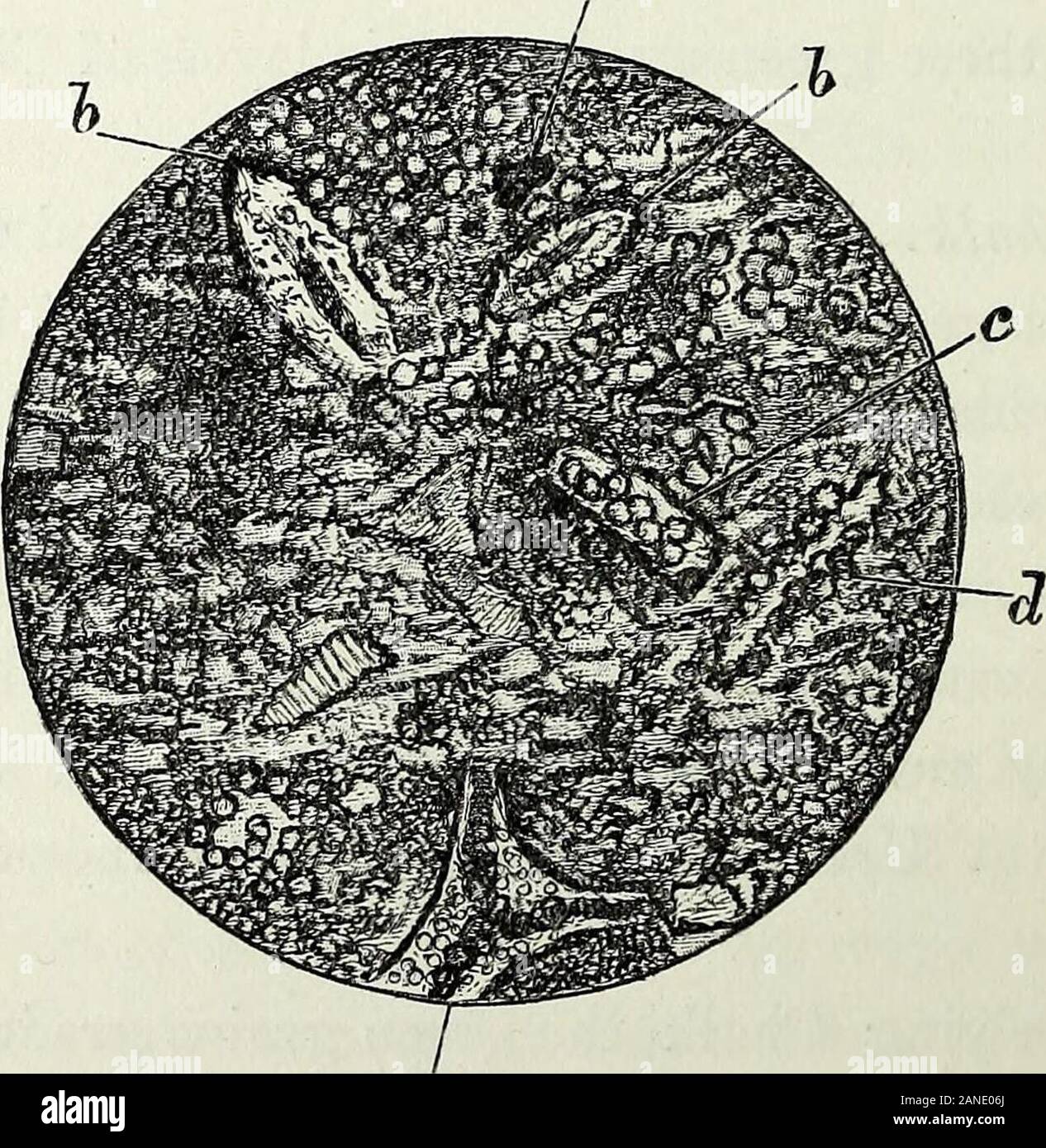The Wiltshire archaeological and natural history magazine . l is not all carbonate of lime, but thatpart of it consists of minute discs and globules, exactly like those inthe Malmstone previously described, only they are smaller; and, asbefore, whenever this globular silica occurs the siliceous spicules ofsponges are also abundant. This curious siliceous Chalk has beenfound at Compton Bassett, Stockley near Calstone, Heddington, The Geology of Devizes. Bound way, Etchilhampton, and near Eastcott. At the last place itcontains further evidence of its siliceous character in yielding* hardcherty n

Image details
Contributor:
The Reading Room / Alamy Stock PhotoImage ID:
2ANE06JFile size:
7.1 MB (602.2 KB Compressed download)Releases:
Model - no | Property - noDo I need a release?Dimensions:
1560 x 1601 px | 26.4 x 27.1 cm | 10.4 x 10.7 inches | 150dpiMore information:
This image is a public domain image, which means either that copyright has expired in the image or the copyright holder has waived their copyright. Alamy charges you a fee for access to the high resolution copy of the image.
This image could have imperfections as it’s either historical or reportage.
The Wiltshire archaeological and natural history magazine . l is not all carbonate of lime, but thatpart of it consists of minute discs and globules, exactly like those inthe Malmstone previously described, only they are smaller; and, asbefore, whenever this globular silica occurs the siliceous spicules ofsponges are also abundant. This curious siliceous Chalk has beenfound at Compton Bassett, Stockley near Calstone, Heddington, The Geology of Devizes. Bound way, Etchilhampton, and near Eastcott. At the last place itcontains further evidence of its siliceous character in yielding* hardcherty nodules which may be regarded as imperfectly formed flints.These, too, correspond closely with nodules that are found in theMalmstone of Surrey, but no such objects have ever before beenfound in Chalk, so that Wiltshire can claim them as a uniquephenomenon. The structure of this siliceous Chalk is illustrated in Fig. 3;which is made up of two parts of a slide of such Chalk, and showsthe various states of mineralization exhibited by the sponge spicules. e f. a Fig. 3. Structure of Siliceous Chalk (magnified about one hundred times). The general ground mass is seen to consist partly of globular silica, partly of shell fragments (/.) with still finer calcareous dust betweenthem i a is a sponge spicule the central part of which is filled withglobular silica; b b are spicules of unaltered silica cut throughobliquely and showing the axial canal filled with Glauconite ; c isa partly dissolved spicule—its outline only shown by the globularsilica into which it seems to have passed ; and d is another partlydestroyed spicule; e is a grain of Glauconite, of which this slide By A. J. Jules-Browne, B.A., F.G.S. 325 only shows a few scattered particles. For this drawing- I am in-debted to Mr. W. Hill, F.G.S., and the wood engraving is atestimony of Mr. J. D. Coopers skill in that art. The higher part of the Lower Chalk consists of alternating softand hard beds, some of the latter being very h